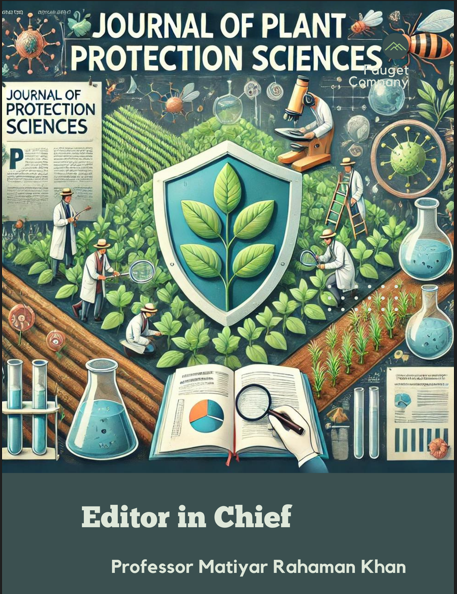Effect of interaction of Xanthomonas axonopodis pv. betli cola and Pseudomonas betle on the extent of lesion develop ment on betelvine leaf
DOI:
https://doi.org/10.48165/Keywords:
Xanthomonas axonopodis pv. betlicola and Pseudomonas betle, tissue, lanacearumAbstract
Betelvine (Piper betle L.) is an important cash crop in West Bengal, India. This crop is com monly affected by stem rot and leaf spot dis ease (4) caused by two different genera of bacteria - Xanthomonas axonopodis pv. betli cola Patel et al. (Vauterin et al.) and Pseudo monas betle Ragunathan (Săvulescu). Two bacterial pathogens enter into the host through stomata, hydathode and injury. Both the bac teria produce prominent dark brown lesions at any portion of the vine stem. Surface of such lesion becomes sticky in humid condition. On the leaf, small to large, circular to irregu lar and/or angular brown coloured spots and marginal leaf blight symptoms are produced by both the bacteria. All types of spots are surrounded by yellow halo or the halo is pre sent in between brown and green tissue. At the underside of the leaf, the brown lesion is encircled by a water soaked zone or water soaked area which is found in between brown lesion and green tissue in marginal blight. Frequently both the bacteria have been de tected from the same leaf spot or stem lesion (3, 4) in different plantation. This fact created an interest to find out whether the interaction of the two bacteria had any effect on the size of lesion. Leaves of betelvine (cv. Bangla Pan) were collected from farmers' Boroj. Bacterial sus pension was prepared by adding sterile dis tilled water in the tube containing 48 hrs old slant culture of the bacteria. The tube was properly shaken to form uniform suspension (109 cell/ml). Afterwards, with the help of a hypodermic syringe, the bacterial suspension was injected in the veins of betel leaves (6). Upon injection, the leaf tissue adjacent to the injected vein became water soaked. The in oculated leaves were kept in polypropylene bags containing a moist cotton wool. After blowing air into the bags, the mouth of the bag tied with a rubber band. These polypro pylene bags were then incubated at 28 ± 1°C in BOD incubator.
References
1. Acharya A Dash SC Padhi NN. 1987 Indian Journal of Nematology 17: 196-98.
2. Bhale MS Chaurasia RK Nayak ML. 1985 Indian Phytopathology 38: 365-66.
3. Bhattacharya R Jana M Khatua DC. 2005 Journal of Mycology and Plant Pathology 35: 515.
4. Bhattacharya R Mondal B Ray SK Khatua DC. 2012 International Journal of Bioresource Stress Management 3: 211-16.
5. Kelman A. 1953 A Literature, Review and Bibliog raphy. North Carolina Agricultural Experiment Station, Technical Bulletin No.99: 194.
6. Klement Z. 1963 Nature, London 199: 299-300.
7. Pathak KN Roy S Ojha KL Jha MM. 1999 Indian Journal Nematology 29: 39-43.

